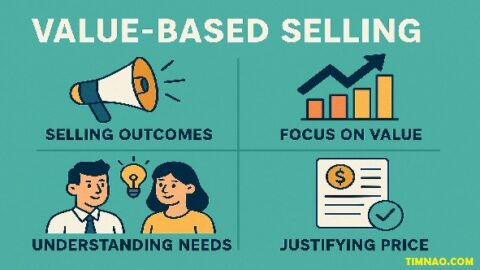Why Front-End Sales Leadership Transforms Struggling Teams Into Sales Champions 🚀
Front-end sales leadership is more than just a modern buzzword—it’s the new gold standard for driving performance, inspiring teams, and closing more deals in today’s competitive sales environment. If your sales team feels stuck, demotivated, or underperforming despite all the tools and processes in place, the missing ingredient might not be strategy—it’s leadership from the front.
Unlike traditional managers who lead from behind dashboards and reports, front-end sales leaders jump into the trenches. They prospect, handle objections, coach in real time, and embody the very mindset they expect from their team. This hands-on approach creates trust, ignites motivation, and transforms struggling teams into confident, high-performing units.
In this in-depth guide, you’ll discover exactly how to embody this leadership style, with bold, practical steps that even beginners can implement right away. From building authentic communication to leveraging tech without losing the human touch, every section is packed with insights to help you lead by example and spark a powerful shift in your sales culture.
Let’s dive in. 👇
📚 Table of Contents
- 🚀 Why Front-End Sales Leadership Is a Game-Changer
- 🧠 The Mindset Shift: From Manager to Frontline Leader
- 🤝 Building Trust by Showing Up
- 🔥 Lead by Example in Daily Sales Hustle
- 💬 Mastering Authentic Sales Communication
- 🧱 Resilience: Turning Rejection into Growth
- 🎯 Coaching with Courage and Data
- 🛠️ Tech + Leadership: Automating Without Disconnecting
- 🌱 Evolve or Fade: Committing to Lifelong Sales Leadership
- ✅ Final Thoughts: Make Bold Leadership Your Signature
🚀 Why Front-End Sales Leadership Is a Game-Changer
Front-end sales leadership isn’t just a trendy buzzword—it’s a radical shift in how modern sales teams thrive in today’s competitive market. Gone are the days when sales managers barked orders from behind a spreadsheet. Today, the most effective leaders are those who lead by example, roll up their sleeves, and engage directly with their teams and clients.
This approach doesn’t just build morale—it drives results.
When a leader takes the front lines, they show—not just tell—what great sales behavior looks like. From handling objections to demonstrating empathy in calls, every action becomes a live coaching opportunity. That’s how sales excellence spreads: not from theory, but from example.
Why the Old Model No Longer Works
In traditional setups, sales managers often focus on numbers, dashboards, and pipeline reviews. But here’s the problem: data can’t coach behavior. Numbers reveal what happened, but not why it happened—or how to improve it.
That’s why top-performing teams are gravitating toward hands-on leadership that brings clarity, momentum, and trust.
According to Salesforce’s 2024 State of Sales report, teams with actively involved sales leaders outperform passive ones by over 30% in quota attainment. That’s not a coincidence—it’s proof that presence matters more than pressure.
🧠 The Mindset Shift: From Manager to Frontline Leader
So, what separates a traditional sales manager from a frontline leader?
It all starts with a mindset shift. Instead of simply managing tasks, top leaders see themselves as coaches, mentors, and active participants. They don’t lead from a corner office—they lead from the trenches.
Bold Leadership Starts with Action
Leading boldly means showing up in client meetings, joining sales calls, and being present in pipeline building. It means being willing to demonstrate the very techniques you expect your team to use. Think of it as leading through influence, not just authority.
Here’s an example:
Instead of saying, “We need more discovery calls,” a front-end leader jumps on a call with a junior rep and models how to conduct a powerful discovery conversation. That’s leadership in action.
Authenticity > Authority
The best front-end sales leaders don’t hide behind polished personas. They admit when they make mistakes, share their own past struggles, and build psychological safety where reps feel confident taking risks and asking for help.
In doing so, these leaders create cultures of ownership and initiative. When your reps know you’re in the fight with them, they’re more likely to step up and push harder—even in tough quarters.
🤝 Building Trust by Showing Up
Trust doesn’t come from job titles or fancy pep talks. It’s earned by consistent, visible leadership.
The Credibility Factor
Imagine a sales leader who regularly joins calls, offers real-time coaching, and celebrates wins publicly. Their credibility grows organically. Contrast that with a manager who only appears for end-of-quarter reviews. Who would you follow?
Trust is built in the small moments:
- Being there when a rep loses a deal
- Offering feedback after a tough call
- Sharing honest updates about performance
These actions show that leadership is partnership, not policing.
Clients Can Feel It Too
Front-end leadership isn’t just internal—it affects client perception. When prospects see a confident, engaged leader on the call, it reinforces credibility and accelerates deal momentum. Your involvement signals that the client is a priority, not just a transaction.
One great tactic: Offer to co-host key meetings with your reps. It gives clients confidence while giving reps the support they need to level up.
🔥 Lead by Example in Daily Sales Hustle
Nothing inspires a team more than seeing their leader in the game.
Prospecting with the Team
Reps dread cold outreach, especially when it feels isolating. But when their leader also makes calls, sends cold emails, or joins live demos, the energy shifts. They feel supported—not monitored.
Tip: Dedicate 1–2 hours per week to “Power Prospecting Blocks” where you and your team hit the phones together. Add a Slack thread to track progress in real time. You’ll be surprised how contagious that momentum becomes.
Modeling Great Communication
Your tone, language, and listening style all become templates for your team. Whether it’s:
- How you handle objections,
- How you craft compelling narratives, or
- How you respond to silence on a call…
…your behavior shapes theirs.
So be intentional: demonstrate curiosity, empathy, and clarity every time you communicate. Your reps will follow suit—and so will your close rate.
💬 Mastering Authentic Sales Communication
In today’s hyper-aware marketplace, buyers can sense scripted, robotic sales pitches from a mile away. That’s why authentic sales communication is now the gold standard—and it starts with how leaders communicate with their team and clients.
Speak With Purpose, Not Pressure
When sales reps mimic high-pressure tactics, it’s often because they see those behaviors modeled. But pressure doesn’t build trust—purpose does.
A great front-end leader shows how to connect through meaningful dialogue, not manipulation. They:
- Ask open-ended questions
- Mirror the client’s tone and pacing
- Stay present instead of rushing to pitch
This approach doesn’t just build rapport—it builds relationships that convert.
Listening: The Silent Superpower
Authentic communication isn’t just about talking—it’s about listening with intent. The best leaders teach their teams to:
- Listen between the lines
- Detect hidden objections
- Validate the customer’s pain before pitching a solution
Try this: In your next pipeline review, instead of asking “Why didn’t it close?” ask “What did the client say when you asked about their biggest obstacle?” This shifts focus from guessing to active listening and unlocks more informed decisions.
🧱 Resilience: Turning Rejection into Growth
Rejection isn’t the enemy—it’s the gateway to greatness.
The reality is that every sales rep hears “no” far more often than “yes.” The difference between top performers and the rest? Resilience.
Rejection Is Feedback, Not Failure
Bold front-end leaders reframe rejection as data. They help their reps see:
- “No” means “Not yet,” or “Not this way”
- Rejection is a sign you’re taking enough swings
- Every lost deal is a learning opportunity, not a personal flaw
Encourage your team to document the reasons behind every objection. Was it price? Timing? Competitor? Then review this data weekly and use it to sharpen your strategy.
Normalize Rejection, Celebrate Grit
Create a culture where rejection is not only accepted—but respected.
Run weekly “rejection power hours” where reps share the toughest objections they faced and how they bounced back. Publicly recognize the reps who show up after a tough week. That consistency breeds confidence, and confidence breeds results.
And always remind your team: resilience isn’t just about pushing harder—it’s about bouncing smarter.
🎯 Coaching with Courage and Data
Data is only powerful when paired with empathetic coaching. As a front-end leader, your job is not just to track performance—it’s to develop your people.
Real-Time Coaching > Quarterly Reviews
You can’t course-correct if you’re only reviewing results once a month. Great leaders coach in the moment, leveraging tools like:
- Call recordings (e.g., Gong or Chorus)
- Real-time sales dashboards
- Slack or CRM comments for mid-cycle guidance
Every conversation is a coaching opportunity—if you’re present enough to catch it.
Courageous Coaching: Praise & Push
The best coaching blends encouragement with accountability. Here’s how:
- Praise what’s working: Be specific and timely. “Your discovery questions in that call were top-notch.”
- Push what’s not: Without sugar-coating. “You missed the buying signal. Let’s roleplay how you could’ve responded.”
Use frameworks like the SBI Model (Situation, Behavior, Impact) to give clear, actionable feedback. And always coach forward—focus on how they can improve next time, not just what went wrong.
🛠️ Tech + Leadership: Automating Without Disconnecting
Technology can supercharge your sales process—but only if used intentionally. Over-automation risks disconnecting your team from prospects and each other.
Use Automation to Elevate, Not Replace
Smart leaders automate admin tasks, not relationship-building.
Leverage tools like:
- HubSpot or Salesforce for CRM and workflows
- Apollo or Outreach for email cadences
- Loom for async video follow-ups
- Slack for real-time team communication
Use AI to handle data entry, schedule follow-ups, and monitor KPIs—so your reps can spend more time actually selling.
Stay Human Behind the Automation
Teach your team to personalize intelligently. A personalized first line in an automated email can triple response rates. A custom video message can make your pitch unforgettable.
And as a leader, be visible—even digitally. Send weekly Loom recaps, give voice memos instead of texts, or join team prospecting Zooms. Tech is a tool—but your presence is the multiplier.
🌱 Evolve or Fade: Committing to Lifelong Sales Leadership
In sales, stagnation is the silent killer. The market evolves, buyer behaviors shift, and technology transforms how we sell. If you’re not evolving as a leader, you’re falling behind. Front-end sales leadership is not a one-time strategy—it’s a lifelong commitment to growth.
Growth Is Not Optional—It’s Your Edge
To stay effective, you must adopt a learner’s mindset. That means:
- Reading consistently (sales blogs, leadership books, buyer psychology)
- Following industry experts on platforms like LinkedIn
- Attending virtual summits, such as Sales Hacker’s webinars
- Getting feedback from your team—even if it’s uncomfortable
Great sales leaders don’t wait for problems to grow—they seek insight before issues arise.
And let’s be clear: growth isn’t just technical. It’s emotional too. Emotional intelligence, vulnerability, and the ability to self-reflect are just as crucial as understanding a CRM.
Model What You Expect
Your team mirrors your energy. If you show up consistently learning, growing, and adapting your playbook, your reps will do the same. If you’re set in your ways and avoid feedback, you’ll build a rigid, fearful team.
One powerful habit: Monthly Self-Evaluations. Ask yourself:
- Did I lead from the front this month?
- Did I coach with empathy and clarity?
- Did I prioritize connection over correction?
- Did I evolve, even in a small way?
Leadership is a living thing—it either grows, or it dies.
✅ Final Thoughts: Make Bold Leadership Your Signature
Let’s face it: most sales teams don’t need another report. They need a leader—someone who’s visible, real, and relentless.
When you choose front-end sales leadership, you’re choosing:
- To coach instead of command
- To lead by example instead of hiding behind KPIs
- To embrace resilience, authenticity, and accountability as your daily tools
Why This Matters More Than Ever
In an age of automation, buyers crave human connection. And your sales reps? They crave leaders who don’t just manage but inspire.
So step up. Be bold. Be the first to pick up the phone. The first to ask hard questions. The first to admit a mistake. Let your actions speak so loudly that your team can’t help but follow.
This is how you build not just revenue—but legacy.









